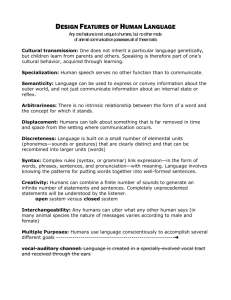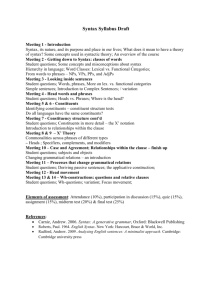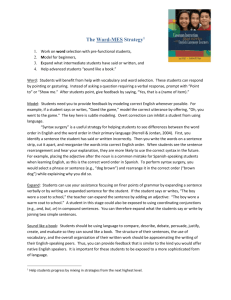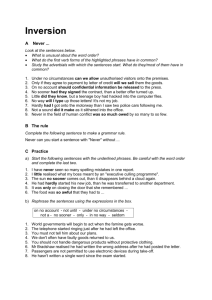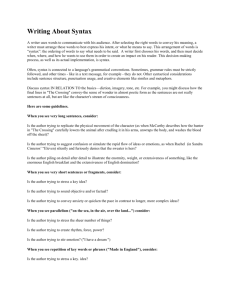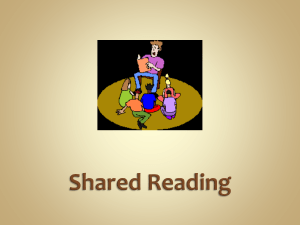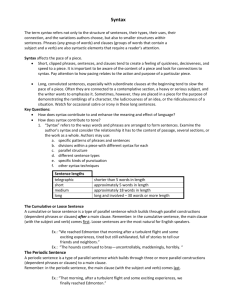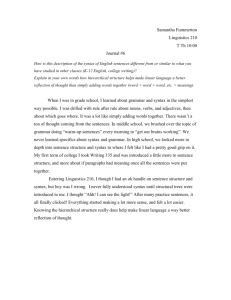1.3 Design Features
advertisement
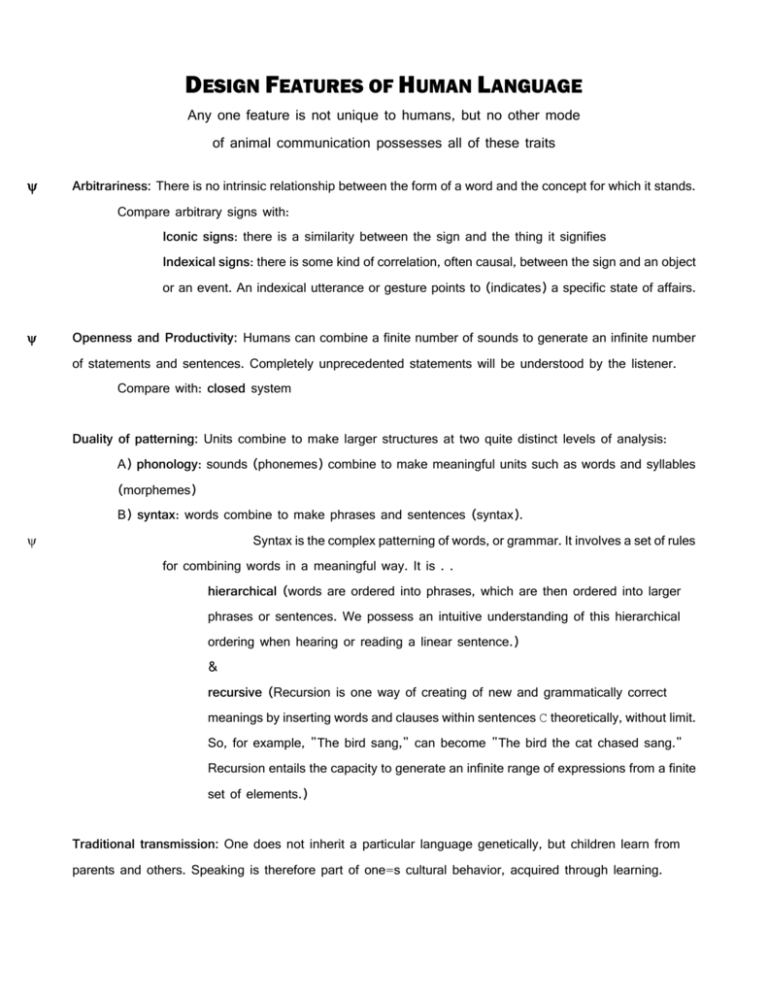
DESIGN FEATURES OF HUMAN LANGUAGE Any one feature is not unique to humans, but no other mode of animal communication possesses all of these traits Arbitrariness: There is no intrinsic relationship between the form of a word and the concept for which it stands. Compare arbitrary signs with: Iconic signs: there is a similarity between the sign and the thing it signifies Indexical signs: there is some kind of correlation, often causal, between the sign and an object or an event. An indexical utterance or gesture points to (indicates) a specific state of affairs. Openness and Productivity: Humans can combine a finite number of sounds to generate an infinite number of statements and sentences. Completely unprecedented statements will be understood by the listener. Compare with: closed system Duality of patterning: Units combine to make larger structures at two quite distinct levels of analysis: A) phonology: sounds (phonemes) combine to make meaningful units such as words and syllables (morphemes) B) syntax: words combine to make phrases and sentences (syntax). Syntax is the complex patterning of words, or grammar. It involves a set of rules for combining words in a meaningful way. It is . . hierarchical (words are ordered into phrases, which are then ordered into larger phrases or sentences. We possess an intuitive understanding of this hierarchical ordering when hearing or reading a linear sentence.) & recursive (Recursion is one way of creating of new and grammatically correct meanings by inserting words and clauses within sentences C theoretically, without limit. So, for example, "The bird sang," can become "The bird the cat chased sang." Recursion entails the capacity to generate an infinite range of expressions from a finite set of elements.) Traditional transmission: One does not inherit a particular language genetically, but children learn from parents and others. Speaking is therefore part of one=s cultural behavior, acquired through learning. Specialization: Human speech serves no other function than to communicate. No biological purposes are served. Semanticity: Language can be used to express or convey information about the outer world, and not just communicate information about an internal state or reflex. Displacement: Humans can talk about something that is far removed in time and space from the setting where communication occurs. Discreteness: Language is built on a small number of elemental units (phonemes or sounds or gestures) that are clearly distinct and that can be recombined into larger distinct units (syllables, words, phrases, sentences). Relatively small inventories of these basic elements can be combined in various ways to generate a much greater variety of messages. Compare with: continuous systems Interchangeability: Any human can utter what any other human says; competent language users both produce and comprehend the same range of signals. Vocal-auditory channel: Language is created in a specially-evolved vocal tract and received through the ears Broadcast Transmission, Directional Reception: Signals travel generally to any potential receiver, and their properties can help to determine the location of the originating source. Rapid Fading: Communication is transitory, in the sense that the signal is not available for inspection for very long after it is produced. Total Feedback: Senders can monitor their own signals. Prevarication: language can describe things that are not literally realized or true. Reflexiveness: We can use language to talk about language itself. Learnability: Any normal human can learn any one of a variety of languages, depending on the data available in infancy.
